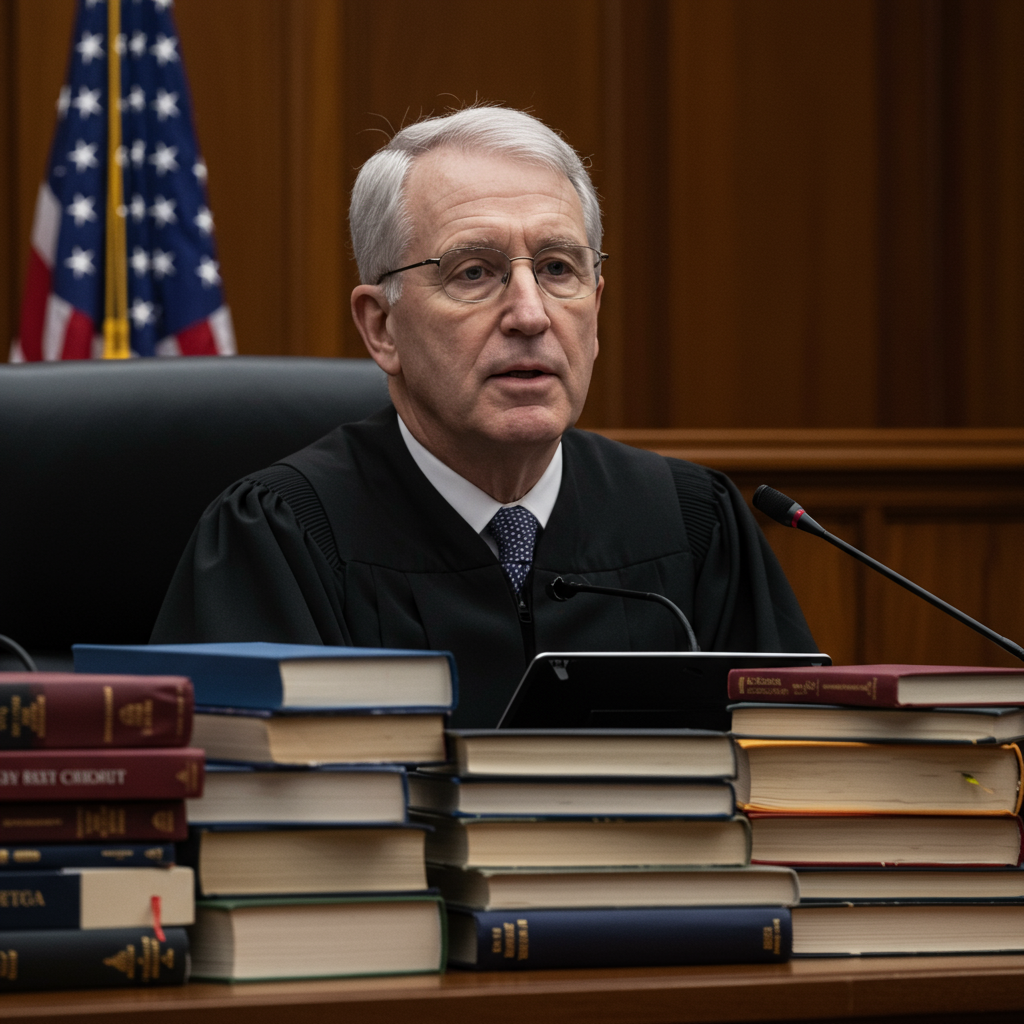A pivotal consumer protection effort by the Federal Trade Commission (FTC) faced a significant setback this week. Just days before it was set to become effective, a U.S. federal appeals court struck down the agency’s much-anticipated “click-to-cancel” rule. This regulation was designed to make unsubscribing from services and subscriptions as straightforward as the initial sign-up process, aiming to eliminate burdensome cancellation hurdles imposed by businesses.
The decision came from the U.S. Court of Appeals for the Eighth Circuit. The court vacated, or invalidated, the FTC rule. Their reasoning was not a disagreement with the rule’s goal of protecting consumers from deceptive practices. Instead, the court found that the FTC failed to adhere to mandatory procedural requirements outlined in the FTC Act during the rulemaking process itself. This procedural misstep was deemed fatal to the rule’s implementation.
Why Was the “Click-to-Cancel” Rule Needed?
The now-vacated rule targeted “negative option marketing.” This business practice allows sellers to interpret a customer’s inaction as consent to continue or begin a subscription, often leading to unexpected and unwanted charges. While the FTC had a limited rule in place since 1973, the landscape of subscriptions and automatic renewals has exploded across various platforms, making the older regulations insufficient.
The proposed “click-to-cancel” rule sought to modernize these protections. It aimed to require companies to offer a cancellation method that was just as simple and accessible as the method used to sign up. This would mean, for instance, that if you signed up online with a few clicks, you should be able to cancel online with a few clicks, without needing to call a customer service line or engage in lengthy, high-pressure chat sessions designed to dissuade you from leaving.
Barriers to Cancellation Targeted by the Rule
The FTC rule specifically aimed to stop businesses from creating deliberate obstacles to cancellation. These barriers often included:
Forcing customers into long, often recorded, phone calls with retention agents.
Requiring customers to navigate complex, multi-step online forms or menus.
Demanding cancellation via mail or other inconvenient methods when sign-up was online.
Using high-pressure tactics during cancellation attempts.
Consumer complaints about difficult subscription cancellations have been on the rise. The FTC reported receiving nearly 70 such complaints daily in 2024, a significant increase from 42 complaints per day in 2021. This surge highlighted the growing need for stronger consumer protections in this area.
The Court’s Reasoning: Procedure Over Substance
The Eighth Circuit Court of Appeals made it clear that its ruling was based purely on the FTC’s process, not on the merit of protecting consumers from difficult cancellations. The court’s opinion explicitly stated, “While we certainly do not endorse the use of unfair and deceptive practices in negative option marketing, the procedural deficiencies of the Commission’s rulemaking process are fatal here.”
The court added that “vacatur of the entire Rule is appropriate in this case because of the prejudice suffered by Petitioners as a result of the Commission’s procedural error.” Essentially, the businesses that challenged the rule argued that the FTC did not follow the proper steps required by law when creating the regulation. The court agreed, finding that this failure prejudiced the petitioners and necessitated overturning the entire rule.
What Constitutes a Procedural Deficiency?
In administrative law, federal agencies like the FTC must follow specific procedures when creating new rules. These procedures typically involve:
Publishing a notice of proposed rulemaking in the Federal Register.
Allowing time for public comment from interested parties (including businesses, consumers, and advocacy groups).
Responding to significant comments received.
Providing a reasoned explanation for the final rule, demonstrating it’s based on evidence and addresses comments.
While the court’s full opinion details the specific procedural missteps the FTC allegedly made, such failures often relate to insufficient notice, inadequate opportunity for comment, or not properly justifying the final rule based on the public record. Getting the process right is crucial for regulations to withstand legal challenges.
Implications of the Ruling
The court’s decision represents a significant victory for the businesses that challenged the FTC’s authority and rulemaking process. It underscores the importance of agencies strictly adhering to procedural requirements when enacting new regulations.
For consumers, the ruling is a setback. The “click-to-cancel” rule, which was set to take effect on July 14, would have provided immediate relief from many frustrating cancellation practices. Now, the status quo largely remains in effect, leaving consumers to navigate the existing barriers many businesses employ.
Consumer advocates expressed disappointment. New York Attorney General Letitia James, who had encouraged consumers to prepare for the rule’s implementation, voiced her belief that consumers “should never have to jump through hoops just to cancel an unwanted subscription.” Her office is reviewing the court’s decision. New York has already taken action against companies with difficult cancellation policies under existing state laws, demonstrating that state-level enforcement is possible, though a federal rule would have offered broader, uniform protection.
What Happens Next?
This ruling likely forces the FTC back to the drawing board. To implement a similar “click-to-cancel” requirement, the agency will likely need to restart the rulemaking process. This would involve initiating a new process, ensuring strict adherence to all procedural requirements this time. Such a process can take months or even years, delaying comprehensive federal protection for consumers.
The decision could also influence how the FTC approaches other future consumer protection regulations. The agency may become more cautious or thorough in its procedural steps to avoid similar legal challenges and rulings. While the court did not challenge the need for such a rule, it firmly reminded the FTC that the method of creating the rule must follow the law precisely.
The fight for easier subscription cancellations is not over. While the federal rule is on hold due to procedural issues, the underlying problem of dark patterns and frustrating cancellation processes persists, continuing to impact millions of consumers.
Frequently Asked Questions
What was the FTC’s “click-to-cancel” rule intended to do?
The FTC’s “click-to-cancel” rule aimed to make canceling subscriptions and recurring services as easy as signing up. It would have required businesses offering negative option marketing (where inaction leads to charges) to allow consumers to cancel using the same method used for signup, eliminating barriers like lengthy phone calls or difficult online processes.
Why did the court strike down the “click-to-cancel” rule?
A U.S. federal appeals court vacated the rule because it found that the FTC failed to follow mandatory procedural requirements under the FTC Act during its rulemaking process. The court stated that these “procedural deficiencies” were “fatal” to the rule, emphasizing that the decision was based on process, not on endorsing deceptive cancellation practices.
What does this court decision mean for consumers trying to cancel subscriptions?
The court’s decision means the federal “click-to-cancel” rule will not take effect as planned. Consumers will continue to face existing cancellation procedures, which can include burdensome steps like required phone calls or difficult online forms. While state laws or future FTC actions might offer relief, immediate federal protection for easy cancellations is delayed.
Conclusion
The Eighth Circuit’s decision to strike down the FTC’s “click-to-cancel” rule marks a significant procedural hurdle for consumer advocates. Although the court did not dispute the need to protect consumers from unfair subscription practices, its ruling based on procedural error halts a key federal effort to simplify cancellations. This outcome highlights the complexities of administrative law and the importance of process for federal agencies. While businesses challenging the rule celebrate a victory on procedural grounds, the FTC must now regroup, potentially restarting a lengthy rulemaking process, leaving consumers to contend with frustrating cancellation barriers in the interim.
Word Count Check: 970



